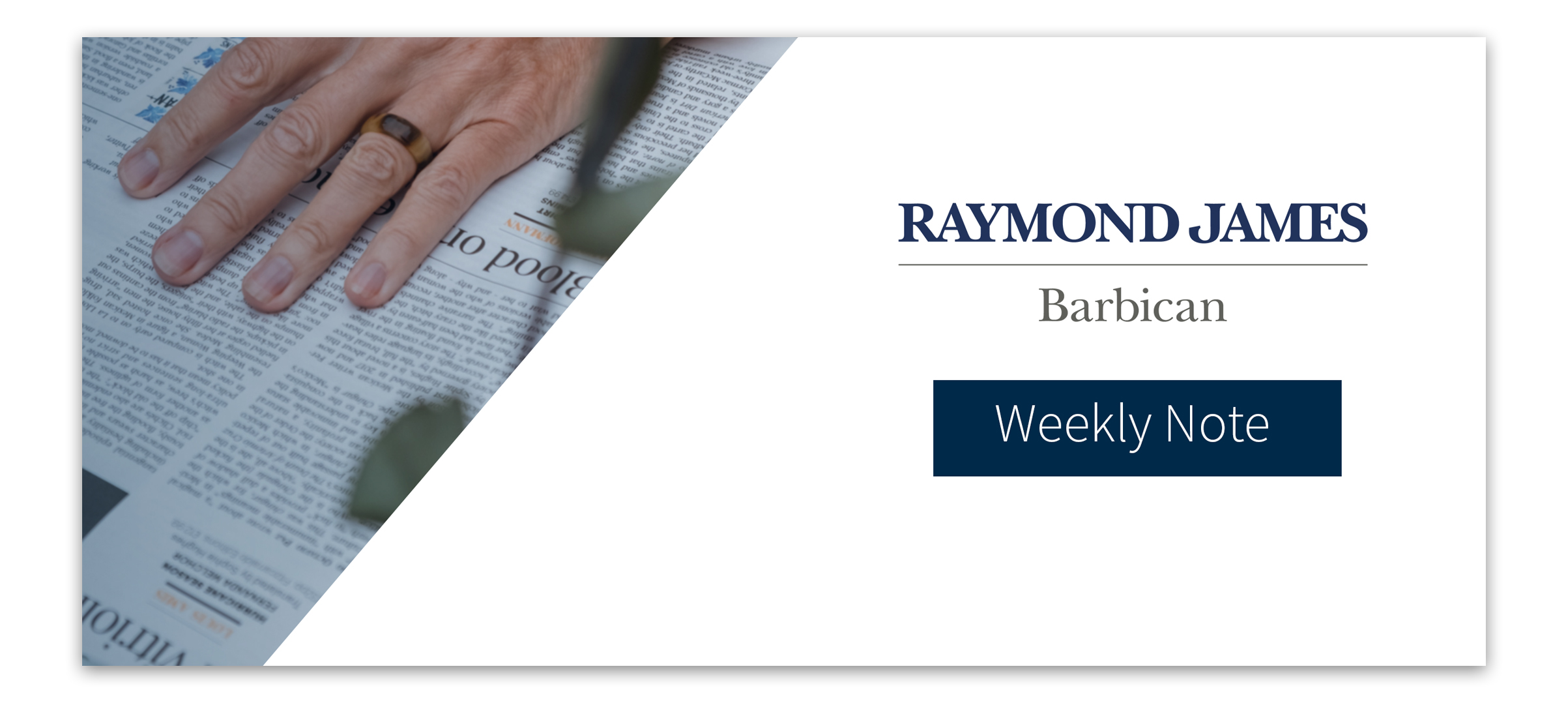This week marked the end of an extremely difficult first half of the year in markets. As challenging as the market was, it is important to continue to be forward-looking, focusing on where markets can go, as opposed to where they are currently. A quick study of history can provide a glimmer of hope here. Since the Great Depression the US S&P 500 has fallen by over 15% in the first six months of the year on five occasions (six if you now include 2022). On each of the five previous occurrences, the S&P 500 posted positive returns for the second half of the year, with the average return being 23%.
Focusing solely on this week, equities continued their yo-yo performance, falling back and giving up most of last week’s gains. The main driver of this was not rising inflation but concerns over economic growth. Consumer confidence data from Europe and the US showed a deteriorating picture, which will likely flow through into weaker consumer spending in the coming months. A combination of high inflation (and future inflation expectations) alongside geopolitical risks have clearly knocked the consumer.
There was some positive news with regards to China’s COVID-19 curbs, with announcements that quarantine time for incoming travellers would be halved. On the ground we also saw Walt Disney’s Shanghai Disney Resort announce it would reopen on Thursday after being shut for three months. The apparent easing of restrictions and reopening of the world’s second largest economy should be supportive for global growth.
The European Central Bank forum on central banking has been taking place throughout the week, with key central bankers speaking. The recurrent theme was on their collective commitment to tackle inflation and attempt to bring it down closer to their 2% target. US Fed Chair Powell stated that he believed the US economy was in “strong shape” and could withstand higher interest rates without economic growth stalling, however, he did say they must accept a higher recession risk in order to tackle inflation. Bond markets continued to shift on their views on future interest rate policy, with the yield on the 10-yr US Treasury note falling below 3% on Thursday, while UK and European government bonds also saw steep decline in yields. The market now expects US interest rates to peak in March/April 2023 before coming down once more. The terminal rate is now below 3.5%, while two weeks ago it was closer to 4%.
The troubled UK economy showed little improvement this week with the nation posting a record current account deficit in Q1 2022. Sterling surprisingly didn’t really react to the news, although much was in the price already, with the currency down over 10% versus the USD in the first half of the year.
As investors it is important to recognise that markets are forward looking and not get too bogged down in the here and now, and instead focus on where asset prices could be in the next 1-3 years. With this mindset, value is starting to appear in a wide range of assets, following significant de-ratings over the first half of the year.
Andy Triggs, Head of Investments
Risk warning: With investing, your capital is at risk. The value of investments and the income from them can go down as well as up and you may not recover the amount of your initial investment. Certain investments carry a higher degree of risk than others and are, therefore, unsuitable for some investors.

